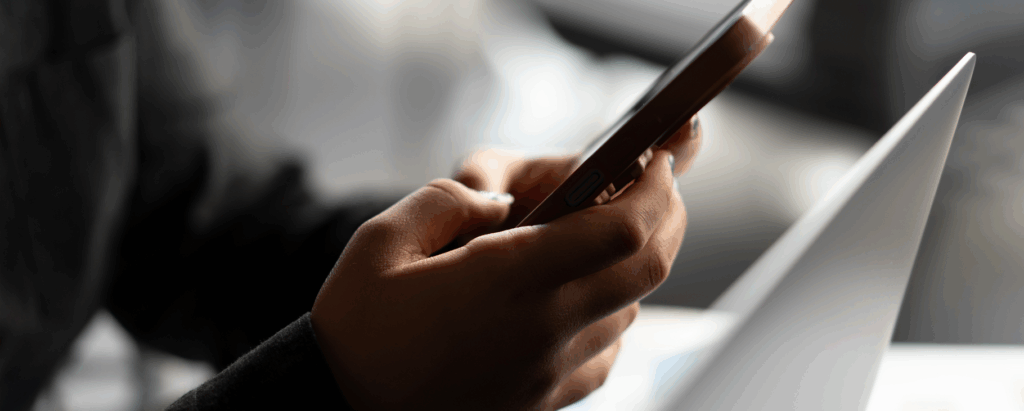Let’s face it — your phone can tell you when to hydrate, when to eat, and when Mercury is in retrograde. But no app in the world can tell you how your crew is really doing. That’s still on you. Technology can track numbers, generate alerts, and even predict trends, but it can’t notice when one of your firefighters hasn’t slept for two days or when your paramedic is quietly carrying the weight of a tough call. That kind of insight doesn’t come from notifications — it comes from presence.
In leadership, presence means stepping away from your monitor’s gentle glow and walking into the human mess of real life. It means checking in, noticing the details and asking questions that no algorithm would ever think to ask.
Lead by Heart — Connect by Choice
I can honestly say I have found myself both intrigued and overwhelmed by today’s modern devices and dashboards. Between smartphones that buzz like angry hornets and dashboards that track everything from turnout times to toilet schedules (OK, maybe not yet, but give them time), technology is ubiquitous. However, technology can’t replace presence.
Reports give you information, your crew gives you insight. Leadership is built face-to-face, not screen-to-screen. It’s impossible to “read the room” from your phone. And trust me, emojis aren’t particularly effective as leadership tools.
Not All Connections Are Equal
Real public safety leadership demands emotional presence, gut-level decision-making and a willingness to walk through the fire with your people — figuratively and sometimes literally. It’s about honoring tradition without becoming overly mechanical. It’s also about recognizing that every call carries human weight, whether it’s physical, mental, emotional, or spiritual.
In today’s world, leaders are surrounded by digital tools. These can be powerful aids for making decisions and tracking progress, but they come with a cost — distraction from people. When your crew thinks everything you know about their morale is based on the department’s latest Net Promoter Score survey, it’s time to get out of the office and among your people.
“Lead by heart” implies listening, mentoring, showing compassion when the job wears someone down, and showing courage when truth needs defending. It goes well beyond policy and procedure. It’s philosophy, legacy, and identity — the stuff you won’t find in an app store.
With all the technology buzzing around us, it’s easy to mistake connections for compassion, information for wisdom. Advice may be just a click or tap away, but that doesn’t mean it’s coming from a place of understanding or shared humanity. If leadership were as simple as a notification, we’d all just subscribe to the “Chief’s Channel” on YouTube and call it a day.
Electronics Manage Data, Leaders Manage People
When we lean too heavily on devices, we risk sidelining the value of experience, empathy and human nuance. Sometimes the best answers are the ones we arrive at slowly through conversation, community, and care. Firefighters don’t need leaders who can generate spreadsheets at lightning speed — they need leaders who show up when the tones drop and stand with them in the chaos.
The greatest leaders use data to inform, but they also lead with heart to inspire. A dashboard can tell you if response times are up. Only your crew can tell you why.
Reclaiming the Human Heart in a Wired World
I’m really not sure how we got here, but here we are. We consult apps before elders, and online forums before family. How often do we substitute the warmth of a hug with the cold glow of a screen ? How often do we scroll past the human in front of us in favor of the virtual “expert” online?
Across cultures, family traditions once provided emotional grounding. Wisdom was passed down through rituals such as prayers at dinner, bedtime stories, morning talks, and evening walks. In the workplace, mentorship came not through onboarding videos but shared coffee breaks and candid conversations with our supervisors. The truth is, though, some of the best firehouse lessons have been taught with a day-old donut in one hand and a cup of burnt coffee in the other.
These moments weren’t particularly efficient, but they were effective. They taught judgment, resilience, and belonging. And they made space for the heart to speak first. Efficiency is for machines; belonging is for people.
First Responders – Empathy Beyond the Badge
Even in high-stakes professions like firefighting, EMS, law enforcement or corrections, the best decisions aren’t made just by training or tech, they’re made by instinct, compassion and shared humanity. For example, the National Fire Protection Association (NFPA) has endless standards, but they don’t have a checklist for when to put a hand on a grieving widow’s shoulder. There is no black-and-white procedure for how to deal with a death you simply couldn’t prevent.
Sure, a paramedic might assess vitals quickly — but they also notice the child hiding behind the door. That’s not data, that’s empathy. And that empathy is what turns responders from technicians into guardians.
How to Reconnect
So how do we reclaim humanity in the era of dashboards, push notifications, and endless alerts? By being intentional.
- Reconnect intentionally. Whether in homes or workplaces, prioritize eye contact over emojis and tough questions over emails. If you can’t remember the last time you looked your crew in the eye instead of looking at your phone, that’s your red flag.
- Honor human wisdom. Seek advice from those with experience, not just online ratings. Your seasoned veterans probably know more about just about everything that goes on in the firehouse than that guy on Instagram with 30,000 followers. Listen to them.
- Lead with your heart. In leadership (and honestly, in everything you do), be open, be vulnerable, listen deeply, and check in often, face-to-face. The question shouldn’t be just “How’s your shift?” but “How are you?”
Technology isn’t the enemy. It has its place, but compassion must remain your compass. Use the dashboard, but don’t let it replace the dashboard conversation — the one that happens while you’re driving back from a call, talking through the hard feels and reminding your crew they matter.
Apps Can’t Hug You Back
At the end of the day, no text alert, data graph, or email thread will ever replace presence. Leadership is about people, not pixels.
We live in a world where we can binge-watch training videos on 1.5x speed, text our entire crew with one swipe, and get food for the whole firehouse delivered in 15 minutes. But when the fire bell rings, leadership is still judged the old-fashioned way, based on trust, connection, and courage.
So, put down that device and walk the floor. Connect by choice. Lead by heart. And remember: No push notification in the world can replace a leader who shows up when it matters most.
“No push notification in the world can replace a leader who shows up when it matters most.”



